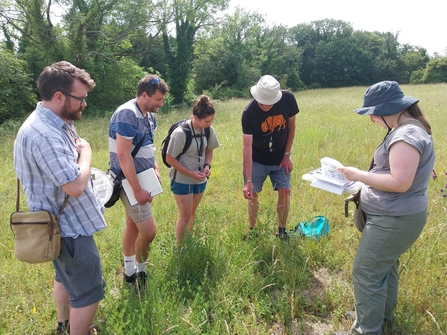It was a beautiful Friday afternoon, and I had the joy of heading out to a chalk grassland site to undertake a survey for a site that would be considered for the Surrey ‘Old’ Grassland Inventory.
The project has been running for a number of years and we are currently in a ground truthing phase to determine whether the sites that have been identified through datasets and aerial photography, can in fact be classified as an ‘old’ grassland and included on the inventory.




